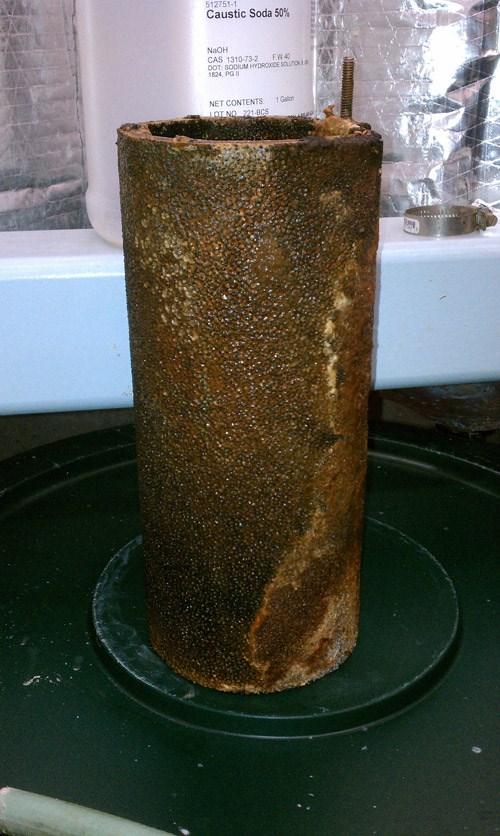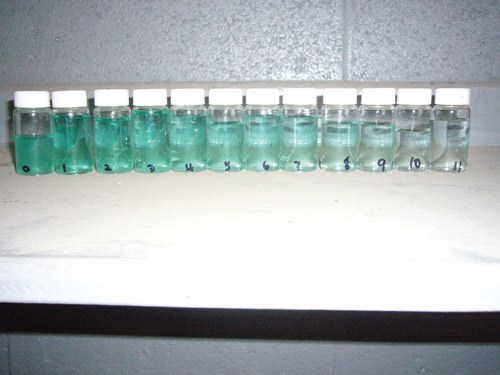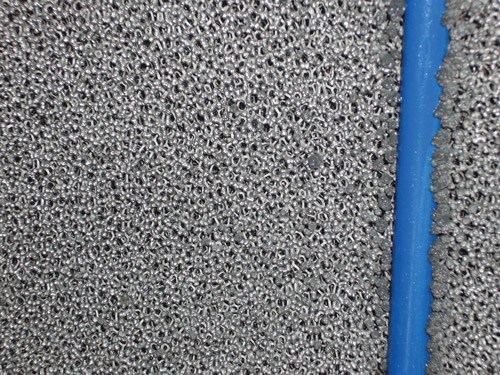Winning the Pollution Control Challenge
Electrowinning, which removes metallic ions from concentrated rinse water and spent process solutions reduces waste, recovers valuable metals and saves job shops big money.
Randy Epner spits out numbers that make platers sit up and take notice:
- Recover 20 kg of nickel per day
- Or 100 kg of silver
- Or 40 kg of gold
Epner, owner of Precious Metals Processing Consultants in Palisades Park, NJ, is a pioneer in the electrowinning process that removes metallic ions from concentrated rinse water and spent process solutions.
For several decades he had only been pushing his systems to those who deal mainly in precious metals such as gold and silver to capture the elements from tanks before they are disposed.
But rising costs on nearly all raw materials had made Epner and other electrowinning system sellers like him go after a broader market.
“Even though precious metals is in our name, we are looking to make recycling heavy metals easier as the price of all commodities are going up,” says Epner, who has been in the business for more than 30 years and whose main products are the GoldBug and the Ionnet systems.
His systems use a metallic matrix of large surface areas, which is formed into a cylindrical cathode (in the case of the Gold Bug), or flat sheets (for the Ionnet). Epner says that combined with the turbulence created by a dedicated pumping system, it exposes the cathode to a continuously renewed concentration of fresh ions. He says this means fast plate-out to very low concentrations.
“You're taking the metals out in your own shop,” he says. “The water stays in your plant, therefore no drums of solution requiring hazmat documentation, no transportation costs for heavy drums, no insurance. It’s easy, inexpensive processing with full accountability. You're back in control.”
But gold and silver remain the chief target of companies like Precious Metals Processing Consultants.
Other major electrowinning specialists in the U.S. include Remco Engineering in Ventura, Calif., which has set up several electrowinning operations:
- Joslyn Manufacturing, Chicago: zinc recovery, 800-2000 ppm input 20 gpm
- Velie Printed Circuits, Costa Mesa, Calif: copper/lead 50 gpm
- Astron Printed Circuits, China: copper/lead 180 gpm
- Pulsatora, Columbia: lead, nickel and copper from recycling operation 25 gpm
- Gorilla Circuits, San Jose, Calif: copper/lead 20 gpm
- Pioneer Circuits, Santa Ana, Calif: copper/lead 25 gpm
Remco has a suggestion for who should be electrowinning: Rule of thumb is that solutions greater than 500 ppm are usually effectively electrowinned; lower metal content solutions can be used, but efficiency is reduced as metal content is decreased.
Remco officials say that in a printed circuit board manufacturing facility, for example, cleaners, microetches, dragouts, electroless dumps and many other solutions are effectively electrowinned. They say copper, lead and cadmium are easy to electrowin, and that nickel is difficult due to internal plating stresses. Chrome is not economical to electrowin, they advise, and tin is possible from plating type baths.
SX Kinetics in Ontario, Canada, has designed and manufactured several gold electrowinning plants for recovery from sodium cyanide solutions.
Steven Webster, a hydrometallurgist with the firm, says the process involves lean electrolyte containing 10 to 20 g/L sodium cyanide at pH >10.5—adjusted with sodium hydroxide—being heated to 90°C and pumped up flow at two bed volumes per hour through a stationary bed of activated carbon loaded with gold.
“The gold that was adsorbed on the carbon as a sodium-gold cyanide complex will be desorbed from the carbon by a reversal of the adsorption mechanism,” says Webster. “The solution exiting the top of the column—which we know as rich electrolyte—will flow by gravity into the electrowinning cell and the gold will be recovered by plating onto steel wool cathodes.”
An example of SX Kinetics success is a gold mining company in Indonesia that features 15 cathode boxes containing steel wool and 16 stainless steel anodes. This gold electrowinning plant is able to produce up to 140 kg of gold per day, says Webster.
Epner’s Ionnet system is a fairly simple process for those requiring large volumes of precious metals recovery or normal volumes of heavy metals recovery. He says that as the metal bearing stream enters the lonnet cell, it is channeled in a serpentine path through a series of electrolytic chambers, each containing two anodes sandwiching a cathode. The turbulence created at the cathode interface ensures high plating efficiency, translating into fast plate-out at very low concentrations.
“The metal deposits on and within the cathode,” he says. “Any non-adherent solids, which tend to accumulate during the electrowinning process, are swept to the cell bottom and contained for convenient draining.”
Each lonnet cathode can hold up to 30 lbs of metal, or 150 lbs for the whole cell. Epner says the system is designed for easy access to all electrodes, and that some of the various solution types for typical applications are copper sulfate, copper cyanide, cadmium cyanide, gold cyanide (stripper solutions), various nickel solutions, palladium, palladium nickel and silver cyanide.
His customers are big believers in the system.
Jack Seidler from Interplex Industries in Flushing, N.Y., wrote to Epner to tell him that after installing the GoldBug system, he extracted almost 40 ounces of gold in the first month of use, essentially tripling his previous results.
“Not being too stupid, we immediately installed GoldBugs in all of our tanks,” Seidler wrote.
Albert Szabo of Queens Plating Co. in New York said that he was taken aback at the results the first time they used Epner’s electrowinning products, something he missed during the company’s first 40 years of operation.
“I can tell you that this was the single best investment in equipment I have ever made, bar none,” Szabo says. “They did not overstate their case.”
For information about Precious Metals Processing Consultants, please call 201-944-8053, or visit preciousmetals-pmpc.com. For information about Remco Engineering, please call 805-658-0600, or visit Remco.com. For information on SX Kinetics, please call 905-372-5981, or visit SXKinetics.com.
Related Content
Top 5 Areas to Consider Automation of Plating Operations
Automation for finishing operations can lead to improvements in process time, repeatability and consistency of quality. Yet, processes that make sense to explore for these operational efficiencies may not always be readily apparent.
Read MoreNASF/AESF Foundation Research Project #122: Electrochemical Approaches to Treatment of PFAS in Plating Wastewater - 9th Quarterly Report
The NASF-AESF Foundation Research Board selected a project addressing the problem of PFAS and related chemicals in plating wastewater streams. This report covers the ninth quarter of work (January-March 2023). In this report, we describe our work on evaluating the performance of PFAS degradation by electrooxidation using surface fluorinated Ti4O7 anodes in batch mode.
Read MoreNASF/AESF Foundation Research Project #121: Development of a Sustainability Metrics System and a Technical Solution Method for Sustainable Metal Finishing - 15th Quarterly Report
This NASF-AESF Foundation research project report covers the twelfth quarter of project work (October-December 2023) at Wayne State University in Detroit. In this period, our main effort focused on the development of a set of Digital Twins (DTs) using the Physics-Informed Neural Network (PINN) technology with application on parts rinsing simulation.
Read MoreNASF/AESF Foundation Research Project #122: Electrochemical Approaches to Treatment of PFAS in Plating Wastewater - 10th Quarterly Report
The NASF-AESF Foundation Research Board selected a project addressing the problem of PFAS and related chemicals in plating wastewater streams. This report covers the 10th quarter of work (April-June 2023). Here, we examine the effect of surface fluorination of Ti4O7 anodes on PFAS degradation performance in terms of energy performance as well as formation of chlorate and perchlorate when chloride is present in the solution. The full paper on this work can be accessed and printed at short.pfonline.com/NASF24Feb2.
Read MoreRead Next
A New Spin on Electrowinning
Innovative technology expands metals recovery possibilities
Read MoreEpisode 45: An Interview with Chandler Mancuso, MacDermid Envio Solutions
Chandler Mancuso, technical director with MacDermid Envio discusses updating your wastewater treatment system and implementing materials recycling solutions to increase efficiencies, control costs and reduce environmental impact.
Read MoreEducation Bringing Cleaning to Machining
Debuting new speakers and cleaning technology content during this half-day workshop co-located with IMTS 2024.
Read More


























